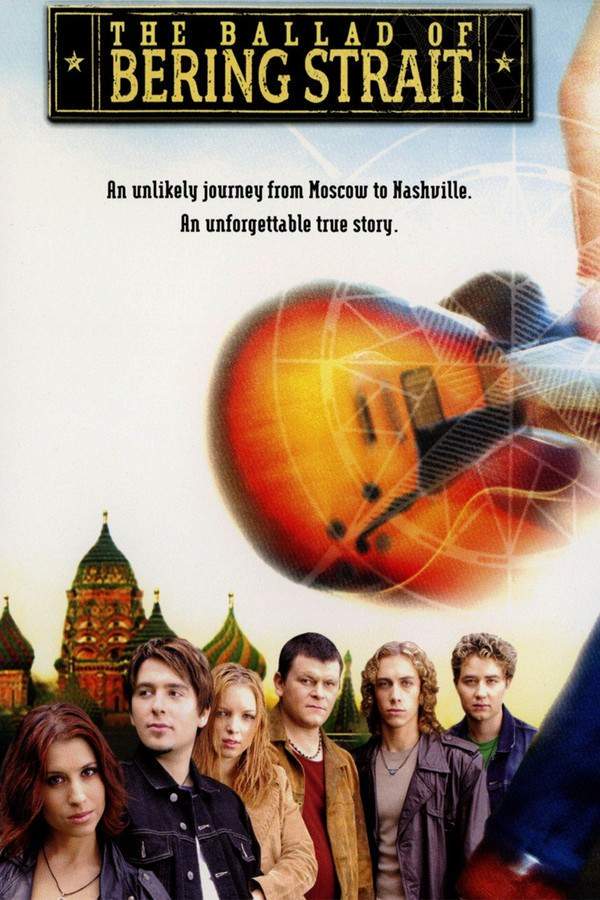
Seven Songs from the Tundra
Year: 2000
Runtime: 90 mins
Language: Russian
Directors: Anastasia Lapsui, Markku Lehmuskallio
An anthology of stories about the indigenous Nenet peoples of the Northern Russian tundra, and how their way of life was disrupted by the advent of Soviet power.
Warning: spoilers below!
Haven’t seen Seven Songs from the Tundra yet? This summary contains major spoilers. Bookmark the page, watch the movie, and come back for the full breakdown. If you're ready, scroll on and relive the story!
Seven Songs from the Tundra (2000) – Full Plot Summary & Ending Explained
Read the complete plot breakdown of Seven Songs from the Tundra (2000), including all key story events, major twists, and the ending explained in detail. Discover what really happened—and what it all means.
Sacrifice
In this opening vignette, a community of Nenets gathers beneath a solitary tree in the vast tundra, their ceremony marked by antlers, a small bell, and the ritual of killing a reindeer. The blood of the animal is coaxed onto the trunk to anoint it, and the severed head rests at the tree’s base as the group settles in to share a stark, intimate meal. They drink reindeer blood from ceramic cups and pass the meat around, a ritual that binds them to the land and to one another. The scene feels both austere and ceremonial, a meditation on life, death, and the reciprocity between people and animals in a world shaped by cold, wind, and seasons. The tone is hushed and respectful, letting the viewer observe how tradition persists even as the winds of change begin to blow across the tundra.
The Bride
A Nenets girl carries a playful, flirtatious spark as she navigates the dynamics of village life, where the attentions of the young men are a constant presence. When news arrives that she has been promised to a man from another village, she leaves with him, only to slip away on the return journey and return home in a moment of quiet rebellion. Her mother’s response is stern, framing the girl’s autonomy within a strict code of obedience, while the mother’s insistence on duty contrasts with the girl’s own desires. A montage follows, showing the girl in a demanding cycle of work—mending clothes, cleaning hides, washing dishes, and tending to boots—so hard that her eyes well with tears. The men she was promised to begin to treat her as a servant, and her outburst—“You swore eternal love to me when my brothers were alive”—speaks to a deeper sense of betrayal and lost innocence. One of the men admits, with a hint of regret, “I must’ve been drunk if something like that slipped out of my mouth.” The narrative culminates years later as she moves through her life, eventually crossing paths with the man she would have married and lamenting the passage of beauty and innocence she once possessed. The story captures the friction between personal agency and the social arrangements that bind communities to tradition and to one another.
An Independent Person
A Nenets man works the wood when four Soviet soldiers arrive, accompanied by a Nenets translator, who announces the arrival of kolkhoz and the need to seize the man’s reindeer. The elder man tries to insist on a cooperative, easygoing ethos—“If this Kolkoze is poor, then of course we help him. It’s the way things are here on the tundra.” But the translator frames the man as shrewd and evasive, painting him as someone who resists the new order. The clash escalates as the soldiers and the man are set against each other, and in the end, a soldier draws a gun. The tension foregrounds the collision between indigenous life and centralized, coercive authority, and it leaves an impression of power that can override ordinary consideration for years of tradition.
God
Two Nenets men pause at a Lenin statue to share a quiet drink and a small meal in a town square. One of them—a war veteran—speaks of the war years, recalling how he once poured vodka on the ground and prayed to Lenin that bullets would miss him. He remembers the devastation of Vesyoly Village, the wounds he endured, and the dead it left behind, and he bitterly notes the statue as he points to the city he once protected: “I protected Lenin’s city, Leningrad.” A white man in a suit interrupts, offering a seat and then instructing colleagues to move the veterans along. The Nenets explain that they were simply praying for good weather and a bountiful catch before heading out to fish. The soldiers mock the idea that Lenin could be a god, underscoring a persistent tension between reverence, memory, and the secular, bureaucratic attitudes of the era.
Enemies of the People
Inside a log cabin, a group of Russian women—old, young, related and not—sing and dance to keep their spirits up as the Nenets around them move with a mix of endurance and fatigue. A young girl named Olesya gazes longingly toward the yard, while a Nenets boy watches from a distance, his mother warning him not to look at those exiled from their homeland. The Commissar arrives with reports and receipts, pushing for perfect records even as the group laments their heavy workload and the demands of schooling. The leader, Ivan, offers hospitality, but the Commissar refuses, declaring, “You’re not people. You’re enemies of the Soviet power. I’d rather swallow smoke or feed mosquitoes in a tepee.” The scene deepens as Olesya slips outside to the lake, watching a Nenets couple in a rowboat and smiling at their simple joy. Ivan speaks of a life marked by hardship, wishing aloud that the people he loves could live differently. The Russian visitors and the Nenets share stories and memories by the fireside, and as the day ends, Mashka and Olesya deliver a missing report on the fish. The Commissar’s stern judgment remains, but the final line offers a glimmer of resilience: “Don’t worry, tomorrow will be better.”
Syako
Syako, a young Nenets girl, prays to the gods for invisibility so that the Russian schoolteachers won’t locate their dwelling. The family’s struggle to move or stay, to preserve their way of life while facing the demands of collective life, becomes a central thread. A white man and a Nenets keeper arrive with orders: the summer and autumn work is finished and new goals are set, with a blunt insistence on the visibility of Soviet symbols—pictures of Stalin and Lenin—everywhere. The father voices concern that their daughter is not ready for school, noting that other children tease her developmentally, while the mother fiercely resists the idea of sending her daughter away. The white man insists, “She’s nine years old, she must go to school. […] You’ll destroy her future.” The mother’s retort is defiant, announcing she will not surrender her daughter to assimilation, and the family’s struggle culminates in a forceful separation as Syako is taken to school, with the mother pursuing the scene in a desperate, futile chase.
Lullaby
The final beat is a quiet, intimate moment: a Nenets woman sings to soothe a newborn, a tender counterpoint to the external pressures that ripple through the earlier stories. The lullaby feels both personal and universal, a moment of calm that underscores the continuity of life and care in the face of upheaval.
The film as a whole presents seven almost fable-like vignettes that together sketch a portrait of life on the tundra under the weight of Soviet collectivation and modernization. Each story balances moments of intimate humanity with the broader political currents of the era, conveying both resilience and vulnerability in equal measure. The atmosphere is contemplative, the imagery stark and expansive, and the moral tone remains restrained and humane, inviting viewers to witness how tradition, memory, and power intertwine in the lived experiences of the Nenets people.
Last Updated: October 09, 2025 at 16:38
Unlock the Full Story of Seven Songs from the Tundra
Don't stop at just watching — explore Seven Songs from the Tundra in full detail. From the complete plot summary and scene-by-scene timeline to character breakdowns, thematic analysis, and a deep dive into the ending — every page helps you truly understand what Seven Songs from the Tundra is all about. Plus, discover what's next after the movie.
Seven Songs from the Tundra Timeline
Track the full timeline of Seven Songs from the Tundra with every major event arranged chronologically. Perfect for decoding non-linear storytelling, flashbacks, or parallel narratives with a clear scene-by-scene breakdown.

Characters, Settings & Themes in Seven Songs from the Tundra
Discover the characters, locations, and core themes that shape Seven Songs from the Tundra. Get insights into symbolic elements, setting significance, and deeper narrative meaning — ideal for thematic analysis and movie breakdowns.

Similar Movies to Seven Songs from the Tundra
Discover movies like Seven Songs from the Tundra that share similar genres, themes, and storytelling elements. Whether you’re drawn to the atmosphere, character arcs, or plot structure, these curated recommendations will help you explore more films you’ll love.
Explore More About Movie Seven Songs from the Tundra
Seven Songs from the Tundra (2000) Scene-by-Scene Movie Timeline
Seven Songs from the Tundra (2000) Movie Characters, Themes & Settings
Seven Songs from the Tundra (2000) Spoiler-Free Summary & Key Flow
Movies Like Seven Songs from the Tundra – Similar Titles You’ll Enjoy
The Ballad of Bering Strait (2003) Complete Plot Breakdown
A Bride of the Seventh Heaven (2004) Plot Summary & Ending Explained
Born in the USSR: 7 Up (1991) Full Summary & Key Details
Hey, Lads and Lasses (1991) Movie Recap & Themes
Life of Ivanna (2021) Film Overview & Timeline
Siberian Lesson (1998) Story Summary & Characters
Letter from Siberia (1957) Film Overview & Timeline
Song of Russia (1944) Detailed Story Recap
Siberiade (1979) Full Movie Breakdown
The Brave Seven (1936) Movie Recap & Themes
From the East (1993) Plot Summary & Ending Explained
7 Women (1965) Ending Explained & Film Insights
My Seven Sons (1970) Story Summary & Characters
Songs from the Southern Seas (2009) Film Overview & Timeline
Seitsemän veljestä (1939) Movie Recap & Themes

















